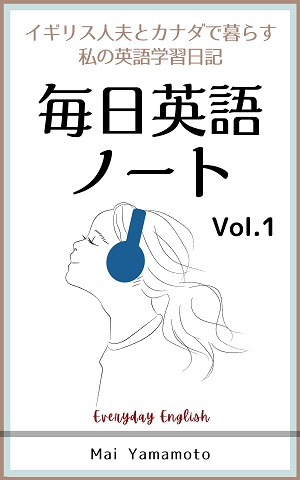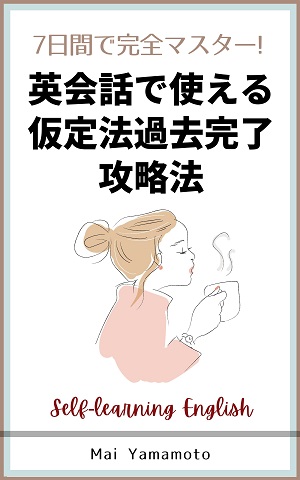The Crane of Gratitude (Tsuru no Ongaeshi) #53
スクリプト:
Hello everyone. Thank you for coming back to my channel. This is Mainichieigonote (everyday English note). My name is Mai, and I am the host of this channel. I usually speak Japanese in my episodes, but I started talking in English recently because I wanted to improve my English speaking skills and my pronunciation.
Today, I’d like to share a part of my writings about a famous Japanese old story, “The Crane of Gratitude (Tsuru no Ongaeshi)”. I believe that most Japanese people are familiar with this old tale, but have you had a chance to tell the story in English?
First of all, let me explain why I wrote about this story. I like weaving. Weaving may not be a common word in everyday conversation in English.
“Weave” is a verb that means to make cloth by crossing threads, combining warp (wɔːp) and weft yarns (jɑːn).
In this context, warp means “Tateito”, the thread placed vertically to you, and weft means “Yokoito” the thread which goes from side to side. And “yarn” means thread.
I think those are beautiful words.
And also, a person who weaves is called a “weaver”. A weaver sometimes uses a big machine which is called a “loom” or sometimes uses a little tool for weaving.
Anyway, I love weaving and the cloth or fabric which are woven (wəʊ.vən). And every time I think about weaving and weavers, it reminds me of “The Crane of Gratitude (Tsuru no Ongaeshi)”.
Here is my writing to tell that story in English. I‘d like to read it out to share with you.
Once upon a time, there were an old man and an old woman.
One winter’s day, the old man went out to work and on his way, he found a crane caught in a trap. The old man felt pity for the crane and saved it.
That night, as he was telling his wife about the crane, there was a knock at the door. The grandma opened the door and saw a beautiful woman standing there in the snow.
The woman said:
“I’ve come to this village to visit someone, but I’m lost. It is snowing very heavily. Is it possible to let me stay here for a night?”
The old couple felt sorry for her and were happy to let her stay. In return, the girl cooked and cleaned the house.
The next day, and the day after that, it continued snowing so hard that she couldn’t go out.
After a few days of living together happily, the old couple decided to let her stay in their home for good.
One day, she said to them:
“Could you buy me a thread? I want to weave cloth.”
The granddad went into town to buy some thread and passed it to her when he went back home.
Before she went into the room which housed the loom, she said:
“Now I’m going to weave, but please do not look in while I’m doing it.”
Three days later, she came out of the room.
What she was holding in her arms was the most beautiful piece of cloth they had ever seen. The granddad took it to the town and sold it for a very high price. On his way back he bought some more yarn, and the girl went back to the loom.
Every time the girl wove (wəʊv) beautiful cloth, the granddad sold it in town. As time went by, the grandma noticed that the girl was getting thinner and thinner with each weaving and started to wonder why.
She said to her husband:
“How can she weave such a beautiful cloth? Don’t you want to see what she is doing in the room?”
She couldn’t resist, and she looked into the weaving room.
In that room, the one who was sitting in front of the loom was not the girl, but a skinny crane. The crane was pulling out its feathers and using them to weave cloth. Grandma was so astonished that she couldn’t help but tell her husband about it.
The sound of the loom stopped, and the girl, who was even thinner than before, came out with a beautiful piece of cloth.
She sadly said:
“You have seen it, haven’t you?
I am the crane who you helped the other day. I’ve come to the village to repay you, but I can’t stay here any longer now that you know who I am. Thank you for everything.”
As soon as she finished her words, she transformed into a crane and flew up into the sky.
It is the story of the crane who sacrificed her own body to weave the beautiful cloth. Interesting enough, I was told that story was describing the women who weave the Yuki Tsumugi in Japan which is traditional Japanese woven fabric with silk.
Even if it’s not Yuki Tsumugi, people involved in weaving and dyeing seem to sacrifice their bodies in some way to do their work. Among the hill tribes in South East Asia, there are people who only wear clothes dyed with a certain dye, and their fingers and skin are completely stained by the dye.
Despite the sacrifices which weavers make, the process of creating beautiful yarns and fabrics is fascinating. And then there is the joy of enjoying the finished material.
Dyeing yarns from nature and weaving them always impresses me.
It almost seems like a divine or sacred act. That’s why I have no doubt that the people who created this crane story were inspired by traditional weavers.
https://japanesque-cafe.com/backstrap-weaving-and-japanese-old-story/
Alright, that’s all for today. Thank you for listening. I hope you enjoyed this episode. I’m always happy to receive your comments, feedback and questions. And don’t forget to visit my website, everydayenglishnote.com, where you can find today’s script.
If you are interested in more essays of mine, you can go to my English blog; https://japanesque-cafe.com/
Thank you again and I will be back to you soon. Until then, goodbye!
#英語学習 #英語勉強法 #英語初心者 #英会話 #英語の勉強 #外国語学習 #イギリス英語 #英語 #毎日配信 #語学 #海外旅行 #海外生活 #海外移住 #バイリンガル #マルチリンガル #海外在住 #カナダ #イギリス #海外





